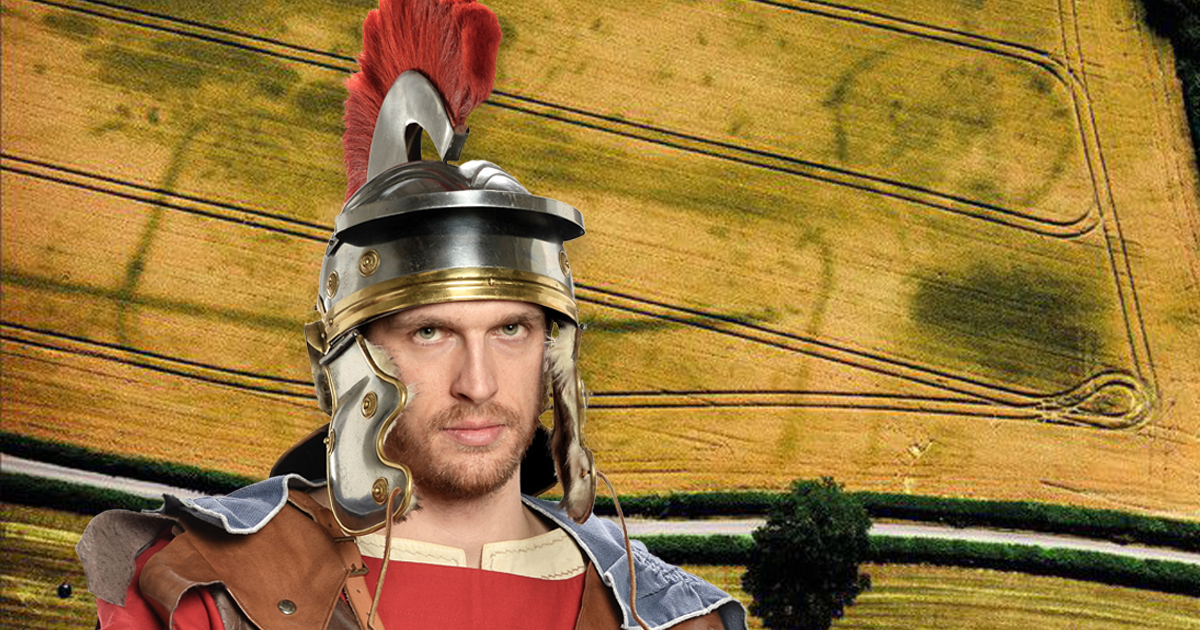A drought in Wales has uncovered some fantastic Roman structures of yore. Two years ago, the United Kingdom had a summer that was uncharacteristically hot. The heat wave had some terrible effects, including drought, fires, and even roads starting to melt in Wales, becoming too sticky to allow traffic on them.
That incredibly hot weather had another, more constructive side effect, however. It gave archaeologists in Wales the opportunity to discover hitherto unknown ancient structures, according to Smithsonian magazine.
As the grass and vegetation withered in the hot, dry weather of that heat wave, certain fields started showing the clear outlines of lines and shapes that were different colors than the rest of the surrounding landscape. Those outlines were the remains of ancient structures that date from the Roman conquest of the British Isles, and clearly visible in aerial photographs.
Buildings, walls, roads, and ditches may have ended up being buried or destroyed over the course of a couple of millennia, but they still affect how water drains around them, which explains how one bit of grass can stay green while another, right next to it, browns and dries, according to Toby Driver. Driver is an aerial archaeologist with the Royal Commission on the Ancient and Historical Monuments of Wales, and his job is to fly around over Wales, looking for signs of ancient structures. He was interviewed about the phenomenon by National Public Radio.
Missing Roman forts and roads revealed by drought (via @BBCNews)https://t.co/VHEazx4PhQ
— HistoryExtra (@HistoryExtra) June 8, 2020
According to his explanation in the interview, many of those structures were surrounded by trenches that were meant both to facilitate drainage and to make it harder for enemies to approach. Even after the structures themselves have disappeared, the trenches that surrounded them retain moisture.
As a result, when the terrain starts to dry out because of the weather, the areas over the trenches stay green while the vegetation around them browns and withers. The green areas provide Driver and others like him the ability to obtain something similar to an ‘x-ray’ of the ground. Driver does this sort of work every summer, but the heat wave of 2018 made his job a whole lot easier.
Analysis of aerial photographs taken in 2018 during a record drought has identified 200 ancient sites in Wales, including at least three Roman forts, a marching camp, a villa, and previously unidentified sections of road. https://t.co/1j8UOX9OJp pic.twitter.com/Rt66fmmgqg
— Archaeology Magazine (@archaeologymag) June 15, 2020
During that heat wave, he and his colleagues took over 5,700 pictures over the course of a little less than two months. He focused on the area of the Preseli Hills in Pembrokeshire, the same area that the bluestone used to erect Stonehenge was quarried. That work identified around 200 new archaeological sites around Wales.
Some of the most notable finds Driver and his colleagues found include several prehistoric barrows (graves) in a field in Nevern and what they believe is probably a Roman marching camp. A marching camp is a quick fortification that was dug in a day, by an army that was on the move. The presumed camp is located near Caerwent, and would be the second camp of this type discovered in the area. Driver believes the camp could be important because the Roman invaders campaigned in the area for a while before the nearby town became one of its most important settlements in Wales.
The Roman campaign to conquer Wales occurred between 50 and 80 AD, and as a result, the country is full of the remains of Roman forts, villas, and other structures. The forts were connected by roads, which can also be seen through the use of aerial photography. Finding and tracing the roads also makes it easier to discover other places where the Romans built.
Related Article: Sinkhole Opens up Near Pantheon Exposing Underground Roman World
Since the photos have been taken, now experts are integrating the information on them and using them to give themselves more information about what the Wales of that era looked like. It will allow archaeologists to learn about the progress of the Romans’ war against the Celtic tribes in the area, what areas were considered important points for holding the area, and how densely populated the region was two thousand years ago.
